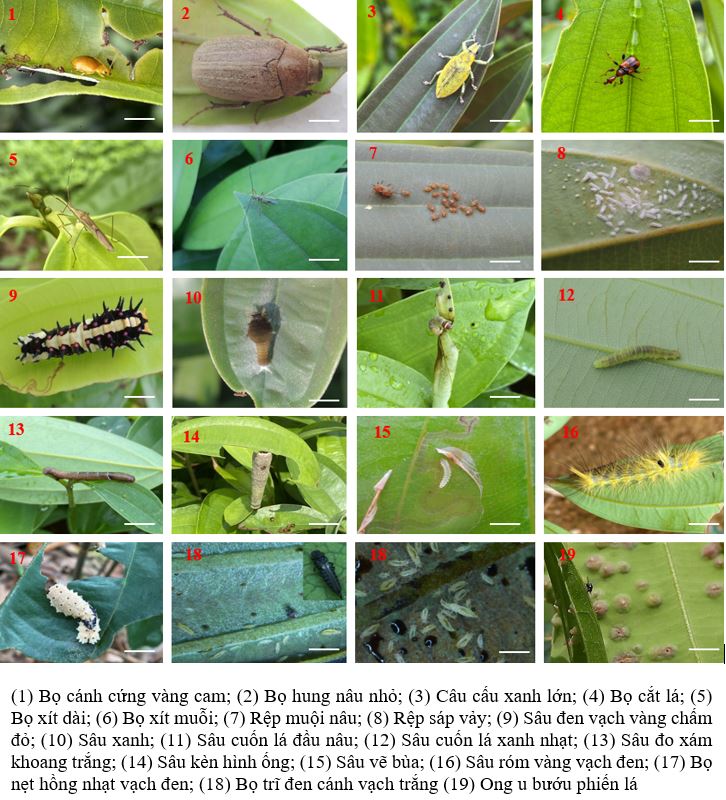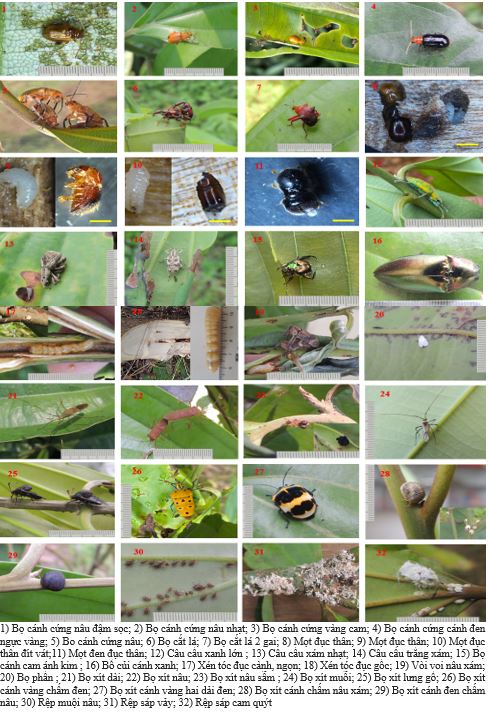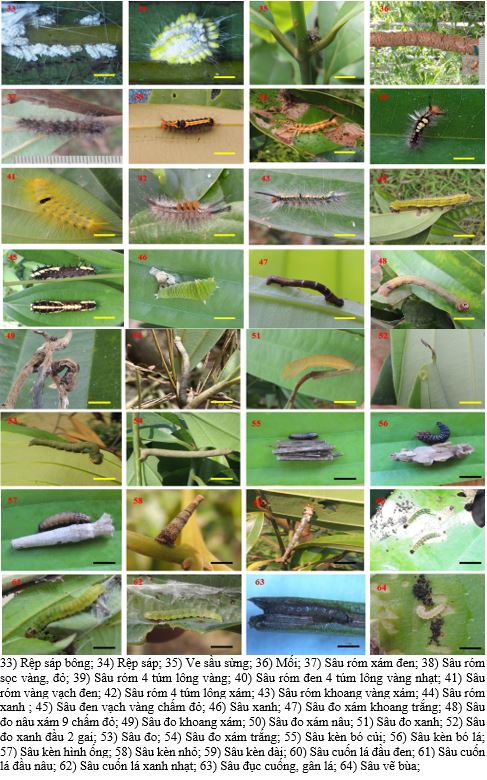Project: Research and develop an integrated management program for control of cinnamon pests in some main cinnamon growing areas (Northern mountainous region and Quang Nam province)
GENERAL INFORMATION:
Funding institution: Project level of Ministry of Agriculture and Rural Development
Project lead organization: Vietnamese Academy of Forest Sciences
Project implementation organization: Forest Protection Research Center
Project leader: Dr Le Van Binh
Implementation time: 2019-2022
RESEARCH OBJECTIVES AND CONTENTS:
Target:
– Identify the species, biological and ecological characteristics of the main pests.
– Identify the main integrated pest control measures available.
– Build an integrated pest management model.
Research aims:
Aim 1: Investigate the pests present in cinnamon nurseries and plantations in the northern mountainous region (Yen Bai) and central region (Quang Nam) and identify the major ones.
Aim 2: Determine the biological and ecological characteristics of the main pests of cinnamon in nurseries and plantations in the northern mountainous region (Yen Bai) and the central region (Quang Nam).
Aim 3: Investigate the possible control measures for the significant pests in nurseries and plantations in the northern mountainous region (Yen Bai) and the central region (Quang Nam).
Aim 4: Develop a model for an integrated management program appropriate for cinnamon pests in nurseries and plantations in the northern mountainous region (Yen Bai) and the central region (Quang Nam)
Aim 5: Transfer information on the technical processes required for the integrated control program by training selected local people.
RESULTS SUMMARY:
Currently, cinnamon trees in nurseries and plantations are frequently affected by pests that damage leaves, branches, shoot tips and trunks. The study has identified 19 species and assessed 18 species of cinnamon nurseries. Thrips (Helionothrips sp., Thripidae family: Thysanoptera) were identified as the main pests of cinnamon in the nursery, with a damage rate of 68.8% and a severity index of 2.14. The survey identified 72 species and assessed 70 species of cinnamon pests in planted forests. Species of grey-brown spanworm (Krananda semihyalina, Geometridae family: Lepidoptera), green caterpillar (Cricula variabilis, Saturniidae family: Lepidoptera) and bark-feeding larvae (Aetherastis grandisalba, Oecophoridae family: Lepidoptera) are the main pests on cinnamon in planted forests, with a damage rate of 65.0 to 68.8% and a severity index of 2.03 to 2.20.
It has been found that the time to complete the life cycle of the thrips species is 20.7 days; the grey-brown spanworm 78.9 days; the green caterpillar 98.2 days and bark-feeding larvae (Aetherastis grandisalba) 340.6 days. The study identified four species of natural enemies: small spiders (Paraphytoseius cracentis) which commonly predate on thrips (Helionothrips sp.) three-striped flies (Exorista sorbillans), white muscardine fungus (Beauveria bassiana), and bacterial rots (Bacillus thuringiensis) which inhibit the grey-brown spanworm (Krananda semihyalina), the green caterpillars (Cricula variabilis) and the bark-feeding larvae (Aetherastis grandisalba), the latter which is also impacted by the white muscardine fungus (Beauveria bassiana).
The project demonstrated that yellow and green sticky traps were an effective way of capturing adult thrips harmful to Cinnamon in nurseries, while traps with 20w UV light were effective in collecting mature Grey-brown spanworms, green caterpillars and bark-feeding larvae in the field. Two pesticides with biologically active ingredients, Abamectin and Azadirachtin, have been identified to prevent thrips and Bacillus thuringiensis var. kurstaki 16,000 IU/mg + Granulosis virus 108 PIB, (active ingredient, Abamectin) was effective for the control of Grey-brown spanworm, green caterpillars and bark-feeding larvae. Two chemical pesticides with active ingredients Imidacloprid and Etofenprox also prevented thrip damage; active ingredients Etofenprox and Cartap to prevent grey-brown spanworm and green caterpillar; Active ingredients Cartap and Chlorfluazuron for the control of bark-feeding larvae.
Silvicultural measures that improve pest control include clearing vegetation, rooting and using NPK and microbiological fertilizers to promote growth and improve cinnamon yield and quality in planted forests.
Latest news
- Project: Study on integrated management of insect pests and diseases on Docynia indica in northern Vietnam
- Project: Study on integrated pest management of major leaf insect pests and stem borer beetles in Acacia hybrid, A. mangium and A. auriculiformis in Vietnam
- Project: Pilot plantation and completion of planting techniques of technologically advanced germplasm of Acacia auriculiformis (AA42, AA53, AA56, AA92, AA95) for sawlog in the southeast and south central.
- Project "Research on selection of varieties and intensive afforestation techniques of Prunus arborea (Blume) Kalkman for providing lager timber in the Northeast and Northwest regions, Vietnam"
- Project: "Research on cultivar selection and silvicultural techniques of Huynh (Tarrietia javanica Blume) intensive reforestation for supplying large timber in the Northern and Southern Central regions"
Oldest news
- Project: Breeding and planting method development of Chukrasia tabularis for high productivity and tolerance of shoot-tip borer in Vietnam.
- MICROMORPHOLOGICAL STUDY ON THE LEAF EPIDERMIS OF Schizostachyum nees FROM VIETNAM
- A new species od Adinandra jack. (Theaceae) from Vietnam
- Mapping the potential for REDD+ to deliver biodiversity conservation in Viet Nam
- Trajectories of deforestation, coffee expansion and displacement of shifting cultivation in the Central Highlands of Vietnam









